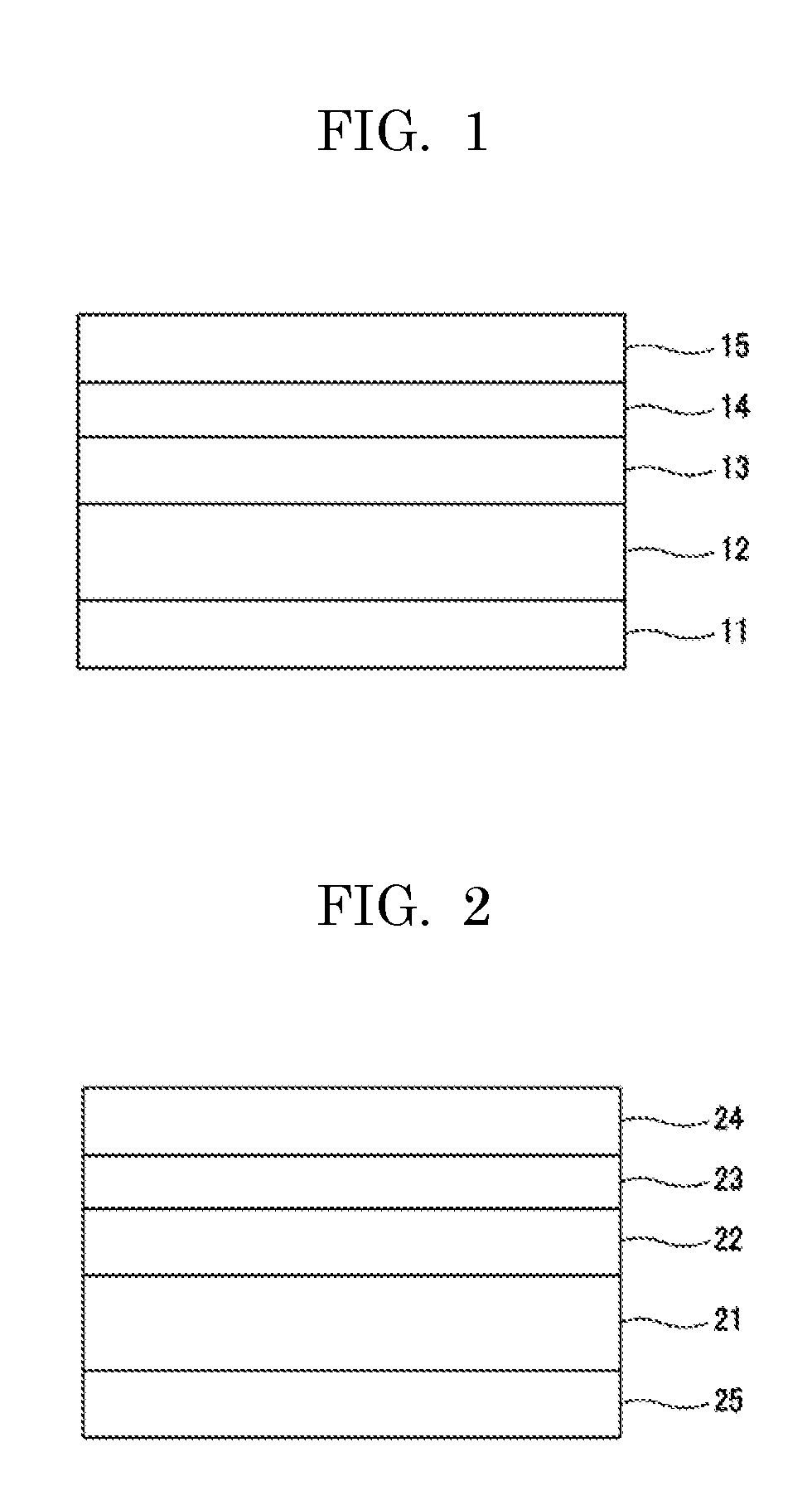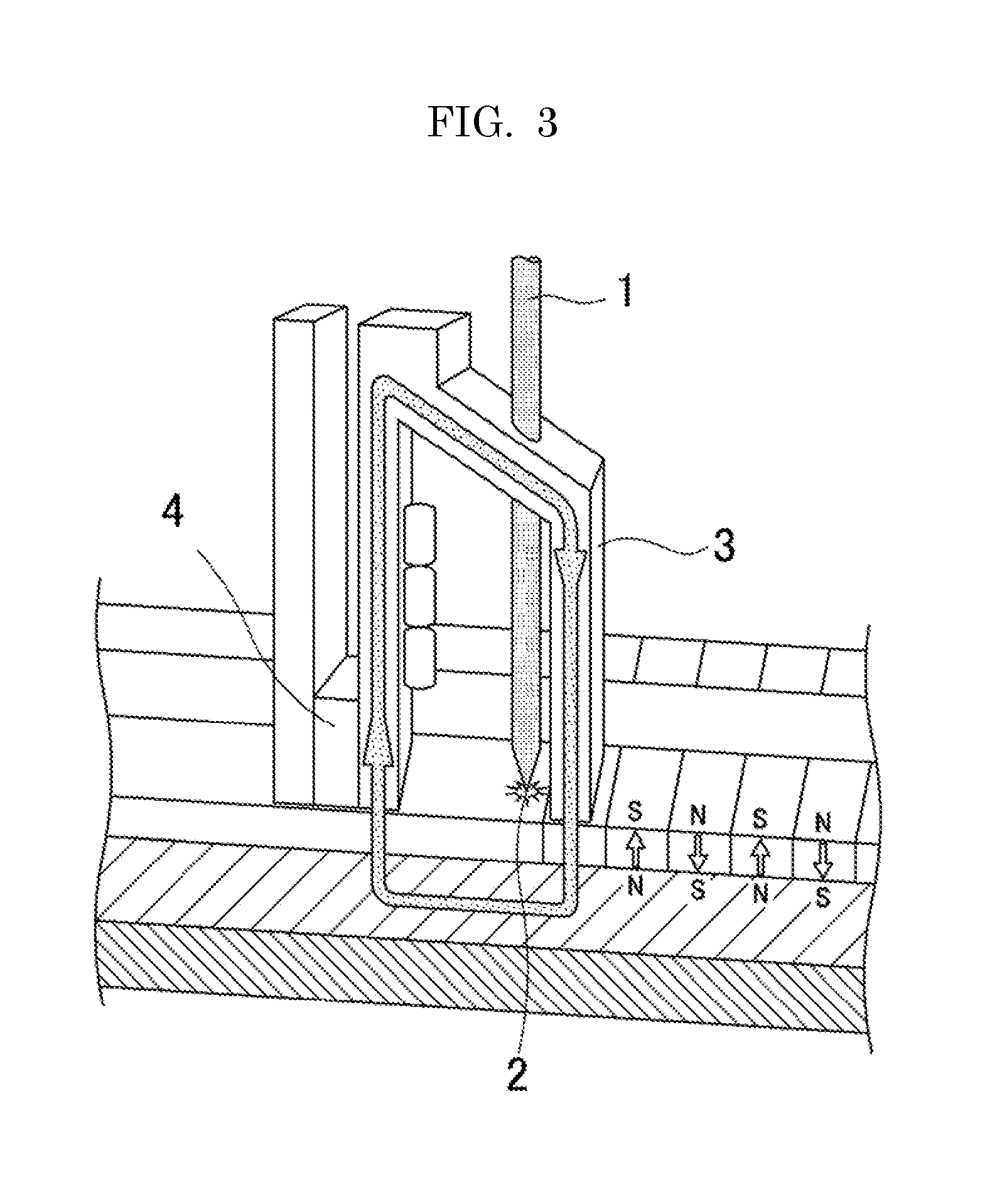Ionic liquid, lubricant, and magnetic recording medium
a technology of lubricant and magnetic recording medium, which is applied in the direction of lubricant composition, record information storage, instruments, etc., can solve the problems of large amount of lubricant, medium's inability to replenish, and difficult to find lubricant on the surface of a medium, etc., to achieve excellent lubricity, excellent practical properties, and excellent lubricity
- Summary
- Abstract
- Description
- Claims
- Application Information
AI Technical Summary
Benefits of technology
Problems solved by technology
Method used
Image
Examples
example 1
Synthesis of tris(trifluoromethanesulfonyl)methide-n-octadecyl ammonium salt
[0110]Tris(trifluoromethanesulfonyl)methide-n-octadecyl ammonium salt was synthesized according to the following scheme.
[0111]Octadecylamine nitric acid salt that was a raw material was obtained as follows. Octadecylamine was dissolved in heated ethanol, an equimolar nitric acid was dripped in the solution. After confirming that the resultant mixture was neutral, the mixture was cooled to precipitate crystals, and the crystals were dried after collected through filtration. The nitric acid salt (3.3 g) as obtained was dissolved in ethanol. To the solution, a solution obtained by dissolving 4.5 g of a potassium salt of methide in ethanol was added. Thereafter, the resultant mixture was stirred for 1 hour, followed by subjected to heating and reflux for 30 minutes. After removing the solvent from the resultant, ethanol was added, and the organic layer as obtained was washed with water, followed by drying with a...
example 2
Synthesis of tris(trifluoromethanesulfonyl)methide-n-octadecyl TBD salt
[0121]Tris(trifluoromethanesulfonyl)methide-n-octadecyl TBD salt was synthesized according to the following scheme.
[0122]First, a synthesis of 7-n-octadecyl-1,5,7-triazabicyclo [4.4.0]-5-decene (octadecyl TBD) that is a raw material is described. The 7-n-octadecyl-1,5,7-triazabicyclo [4.4.0]-5-decene (octadecyl TBD) was synthesized with reference to a method of R. W. Alder et al. (see non-latent literature, Roger W. Alder, Rodney W. Mowlam, David J. Vachon and Gray R. Weisman, “New Synthetic Routes to Macrocyclic Triamines,” J. Chem. Sos. Chem. Commun. pp. 507-508 (1992)).
[0123]Specifically, sodium hydride (55% by mass hexane) was added at 10° C. to 8.72 g of 1,5,7-triazabicyclo[4.4.0]-5-decene (TBD) dissolved in dry THF, and the resultant mixture was stirred. With maintain the temperature at 10° C., bromooctadecane was added to the mixture by dripping over 20 minutes. Thereafter, the resultant was stirred for 30...
example 3
Synthesis of Tris(Trifluoromethanesulfonyl)methide-N-Octadecyl DBU Salt
[0130]Tris(trifluoromethanesulfonyl)methide-n-octadecyl DBU salt was is synthesized according to the following scheme.
[0131]First, synthesis of 6-octadecyl-1,8-diazabicyclo[5.4.0]-7-undecene (octadecyl DBU) is described.
[0132]DBU-C18H37 was synthesized with reference to the method of Matsumura et al. (see non-patent literature, Noboru Matsumura, Hiroshi Nishiguchi, Masao Okada, and Shigeo Yoneda, “Preparation and Characterization of 6-Substituted 1,8-diazabicyclo[5.4.0]undec-7-ene,” J. Heterocyclic Chemistry Vol. 23, Issue 3, pp. 885-887 (1986)).
[0133]Specifically, 7.17 g of 1,8-diazabicyclo[5.4.0]-7-undecene (DBU) that was a raw material was dissolved in a tetrahydrofuran (THF) solution, and the resultant solution was cooled down to 0° C. To the solution, 29 cc of n-butyl lithium having a concentration of 1.64 mol / L was added by dripping in an argon gas atmosphere, and the resultant mixture was stirred for 1 hou...
PUM
| Property | Measurement | Unit |
|---|---|---|
| melting point | aaaaa | aaaaa |
| temperature | aaaaa | aaaaa |
| pKa | aaaaa | aaaaa |
Abstract
Description
Claims
Application Information
 Login to View More
Login to View More - R&D
- Intellectual Property
- Life Sciences
- Materials
- Tech Scout
- Unparalleled Data Quality
- Higher Quality Content
- 60% Fewer Hallucinations
Browse by: Latest US Patents, China's latest patents, Technical Efficacy Thesaurus, Application Domain, Technology Topic, Popular Technical Reports.
© 2025 PatSnap. All rights reserved.Legal|Privacy policy|Modern Slavery Act Transparency Statement|Sitemap|About US| Contact US: help@patsnap.com



